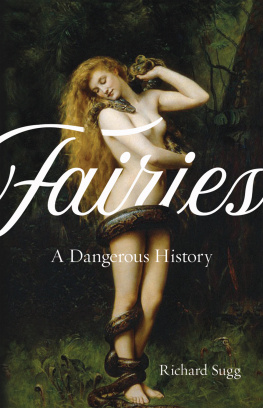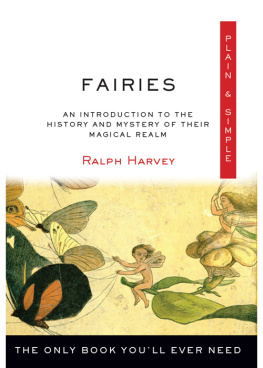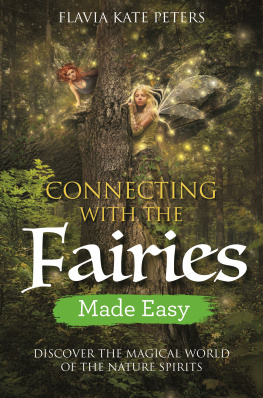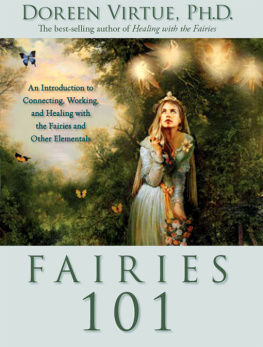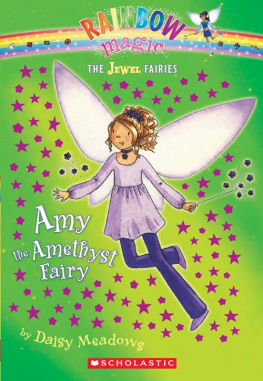Fairies

Fairies
A Dangerous History
RICHARD SUGG
REAKTION BOOKS
To the memory of Christopher Luckens (19442016),
healer, adventurer, and friend.
Published by Reaktion Books Ltd
Unit 32, Waterside
4448 Wharf Road
London N1 7UX, UK
www.reaktionbooks.co.uk
First published 2018
Copyright Richard Sugg 2018
All rights reserved
No part of this publication may be reproduced, stored in a retrieval system, or transmitted, in any form or by any means, electronic, mechanical, photocopying, recording or otherwise, without the prior permission of the publishers
Page References in the Photo Acknowledgements and
Index Match the Printed Edition of this Book.
Printed and bound in China by 1010 Printing International Ltd
A catalogue record for this book is available from the British Library
eISBN: 9781780239422
Contents
Introduction
A HOT OCTOBER NOON; black yew shadows; strong sunlight dappling the clay banks of a stream. Shooting by, something fast, there and gone, a bright vanishing flashes from shade to shade. I pause, pass on. A squirrel? A kingfisher? Surely nothing more exotic than the latter, for I am in the local park, thronged with people, bounded by traffic on either side. Yet just for a moment the thing in the hot shade, off that deserted back path, was more than animal and less than human. For half a second it was a nymph, felt rather than thought.
The fairies had got inside my head. Perhaps they were always there, buried deep in the caves of childhood, deeper still in the childhood of our species. But I had worked hard to get them to the surface, through weeks of listening to those who once believed in them believed unshakably, and accordingly saw, felt, heard and suspected them everywhere, every day of their lives. It is my aim, here, to get you to see the world as they saw it. An aim, if we are to be fussily literal, which is of course impossible: it would involve amnesia, require robbing you of the ability to read and write, oblige me to take away your car keys and dissolve the solid streets around you into fairy hills and glades. Let us try, all the same. This is my dark and impious dream: to get fairies into your head, and to get you into the heads, behind the eyes, of people to whom fairies were terror and wonder, danger and glamour, and yet unlike the angels and demons of educated Christianity right there: romping and singing, fiddling and feasting in the turf which your nailed boots crushed day by day, on the glowing hearth where they warmed themselves as you slept.
Once, people really believed in fairies. By the close of Chapter Three you should be able to see why; and you should (I must warn you) then find that fairies never look the same to you again. But I take no offence if, at this point, you are unconvinced. Few beings of the supernatural world have suffered greater indignities than the fairy. Vampires and witches have been the victims of much distortion, and even ghosts rather belittled by their role in the jokey films of recent years. But fairies? Imagine that one day you are torn from the earth, scrubbed clean, hideously perfumed, shrunk down from four foot of sturdy muscle into a diaphanous five inches, showered in glitter and rainbow hues, and forced to wave a flimsy wand at small girls for the rest of your immortal life. Once, the fear of you moved people to murder, and scared some to death. Your pedigree stretched back to the edge of Time itself, and your powers ranged from the tiniest accidents of field and kitchen to the potential destruction of the world. Once, fairies were woven through the tree roots, bobbing on the tides and, on some enchanted island off the coast, living a life as intricate and complex as that of any human society. Let us meet them now, in two remarkable encounters.
It was in the year 1757, in a summers day, about noon, I, with three others, one of which was a sister of mine, and the other two were sisters. Thus wrote the Reverend Edward Williams, in a letter dated 24 March 1772. Aged seven on that earlier summer day, he was playing with the girls in a field called Kae-kaled in Bodvary parish, Denbighshire, Wales, near the stile which is next Lanelwyd house, when suddenly
we perceived a company of dancers, in the middle of the field, about seventy yards from us. We could not tell their numbers, because of the swiftness of their motions, which seemed to be after the manner of Morris-dancers (something uncommonly wild in their motions) but after looking some time we came to guess that their number might be about fifteen or sixteen. They were clothed in red like soldiers, with red handkerchiefs spotted with yellow about their heads. They seemed to be a little bigger than we, but of a dwarfish appearance.
... Presently we saw one of them coming away from the company in a running pace; upon seeing this we began to be afraid and ran to the stile. Barbara Jones went over the stile first, next her sister, next to that my sister, and last of all myself: while I was creeping up the stile, my sister staying to help me, I looked back and saw him just by me; upon which I cried out, my sister also cried out, and took hold of me under her arm to draw me over; and when my feet had just come over, I still crying and looking back, we saw him reaching after me, leaning on the stile; but did not come over. Away we ran towards the house, called the people out, and went trembling towards the place; which might be about one hundred and fifty yards from the house: but though we came so soon to see, yet we could see nothing of them. He who came near us had a grim countenance, a wild and somewhat fierce look. He came towards us in a slow running pace, but with long steps for a little one. His complexion was copper-coloured, which might be significative of his disposition and condition; for they were not good, but therefore bad Spirits... and he looked rather old than young.
Twenty-five years later, all this was still very real to Williams: so much so that reading the encounter now is rather like being there in real time, gasping from the terror of pursuit, yet seeing in detail numbers and colours, and even the peculiarly uncanny motion of the approaching fairy man. In the earlier stages of my quest through fairyland I would have felt that Williamss account, written down by an educated author, was rather atypical. In fact, there are actually scores of similar reports from educated men and women, running on well into the present day.
A second meeting brings the witness up closer still. The mound known as the Gump, at St Just in Cornwall, was a reputed playground of the Small People here termed spriggans. Climbing up there one night beneath a harvest moon, an old man in search of fairy treasure presently heard music of the most ravishing kind... and on more than one occasion he was compelled to dance in obedience to the time. Presently there was a great crash; the hill opened; myriad lights blazed. Out from the opening in the hill marched a host of spriggans, followed by scores of musicians and soldiers,
each troop bearing aloft their banner... One thing was not at all to our friends liking; several hundreds of the most grotesque of the spriggans placed themselves so as to enclose the spot on which he was standing. Yet, as they were none of them higher than his shoe-tic, he thought he could squash them easily with his foot if they were up to any mischief.
Next, there came a crowd of servants bearing vessels of silver and... gold, goblets cut out of diamonds, rubies, and other precious stones... [and] laden... with the richest meats, pastry, preserves, and fruits. The lights grew still more dazzling: out of the hill were crowding thousands upon thousands of lovely ladies and gentlemen, arrayed in the most costly attire. The old man was nearly overpowered by the scent of flowers, and by voices united in one gush of song, which was clear as silver bells. This singing was directed towards a newly approaching company: children in white, scattering flowers which blossomed where they fell; boys playing shells strung like harps, and line upon line of little men clothed in green and gold. Finally, carried upon a platform above the heads of the men, came a young prince and princess who blazed with beauty and jewels, as if they were suns amidst a skyey host of stars... eventually the platform was placed upon a mound on the Gump, which was now transformed into a hillock of roses and lilies.

